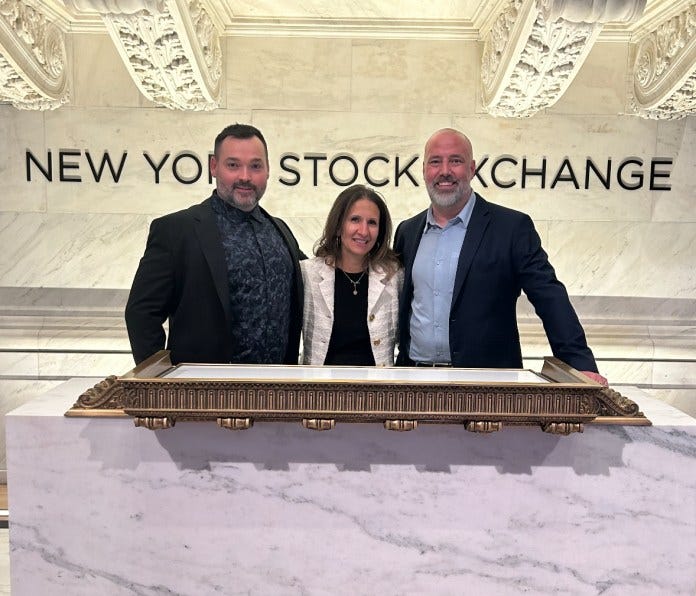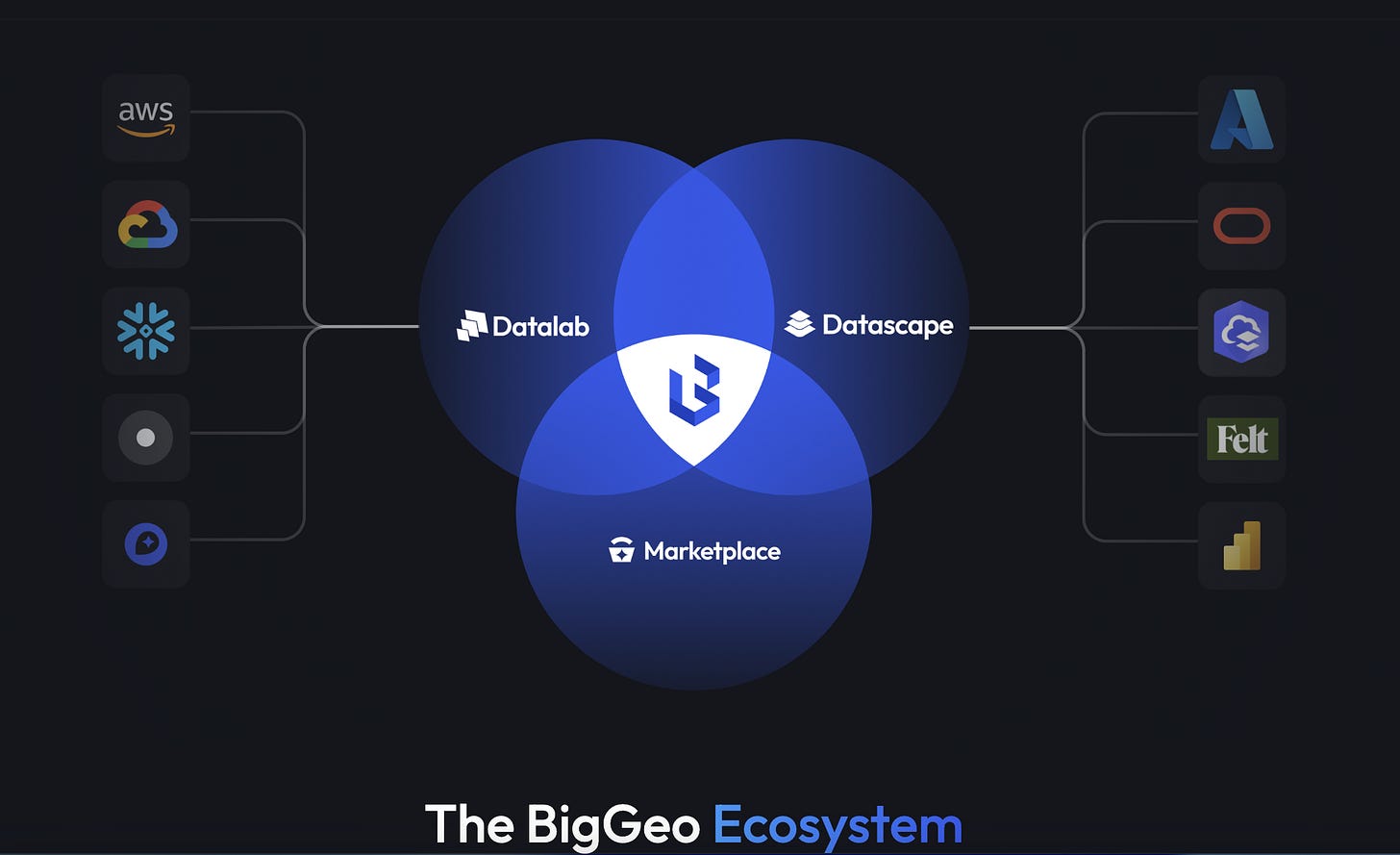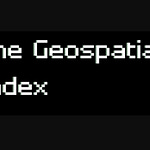CLIPS
Discovering New Insights with Geospatial AI.
Pragmatism vs perfection in geospatial AI.
How the Marketplace Solves Geospatial Data Pain Points.
BIGGEO
Upping the cadence here as the backlog is growing again and I need to get things out whilst they’re fresh. Today we’ve got BigGeo on the chopping block, a Canadian cloud based geospatial company. Brent Lane, CEO, was an inspiring speaker because (showing my bias here) he had another story about ringing the bell at the NYSE to tell us about. This is the second time we’ve had someone on that’s done this, the first was Gillian Mollod regarding The Taskforce on Nature-related Financial Disclosures (TNFD):
This video loads at the 27:47 minute mark.
To be precise, in Brent’s case it was the closing bell. So it’s inspiring to be working through the roster of people in geospatial who’ve walked the hallowed halls of this institution. Who knew they existed!
BigGeo CEO Brent Lane (left), NYSE Group president Lynn Martin, and Big Geo president Brett Jones at the New York Stock Exchange on Oct. 14, 2024. CONTRIBUTED - Livewire Calgary.
What is BigGeo? They have a helpful diagram on their homepage:
Descriptions of each of the 3 components follow. Datalab: A workspace to prepare, manage, and optimize data for analysis, visualization and delivery. Marketplace: A hub designed to showcase, explore, and seamlessly source a wide range of datasets. Datascape: A tool for geospatial visualization, data transformation, and interactive analysis. It is interesting to see Felt there, a prior guest on the show:
We finished off with an idea on how to apply it all - a global parking lot dataset sold via their marketplace that can be used as the basis for predicting quarterly earnings for shops like Dunkin Donuts where car presence, detected via earth observation, could provide insight on income. It should be said here that when I attended the EO Summit last month and talked with the SeerAI CEO about this kind of analysis, he said he’d done it in the past and it was unreliable. One of the reasons is that not all cars are equally predictive of spending. Makes sense, people go at different times of day for different things, particularly when it is a large store selling many products.
Thanks Brent for coming on and showing us another way to ring the bell!














